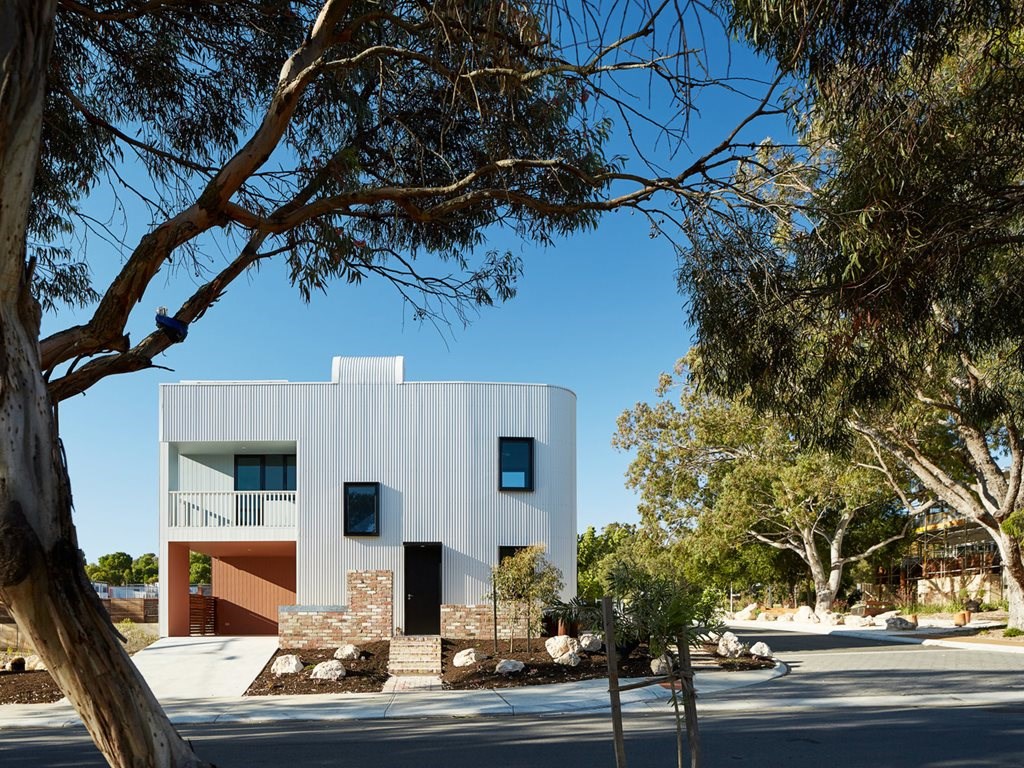
-
26 June 2017
Gen Y / Step House by David Barr Architects and Landcorp may look like a single-family residential home, but its Colorbond steel and fibre cement façade hides what lies within: three separate apartments.
First conceived in response to a Gen Y Demonstration Housing competition in 2013, which invited young West Australian architects to submit ideas that encapsulated the Gen Y lifestyle and living requirements, the Gen Y House is out to prove that medium density can be achieved in a single home lot.
In the current, heated property market, the project architects sought to design homes that would give younger generations – who are increasingly being priced out of the ‘Great Australian Dream’ – a step up. Or, a Step House, as the completed project is aptly named.
Instead of creating a bigger multi-residential unit, David Barr Architects came up with a hybrid design that sits in the middle of a freestanding home and a ‘traditional’ apartment building. Their proposed vision enclosed three one-bedroom, one-bathroom units into a compact two-storey footprint on a 250 square metre block.
Compared to the average Australian house size of 241 square metres, this efficient use of a suburban block created the potential for increased density without sacrificing liveability. Rather than downsizing the apartments to make them fit, each unit has private and communal external areas, clever storage spaces, generous ceiling heights, private outdoor living spaces, and high thermal efficiency.
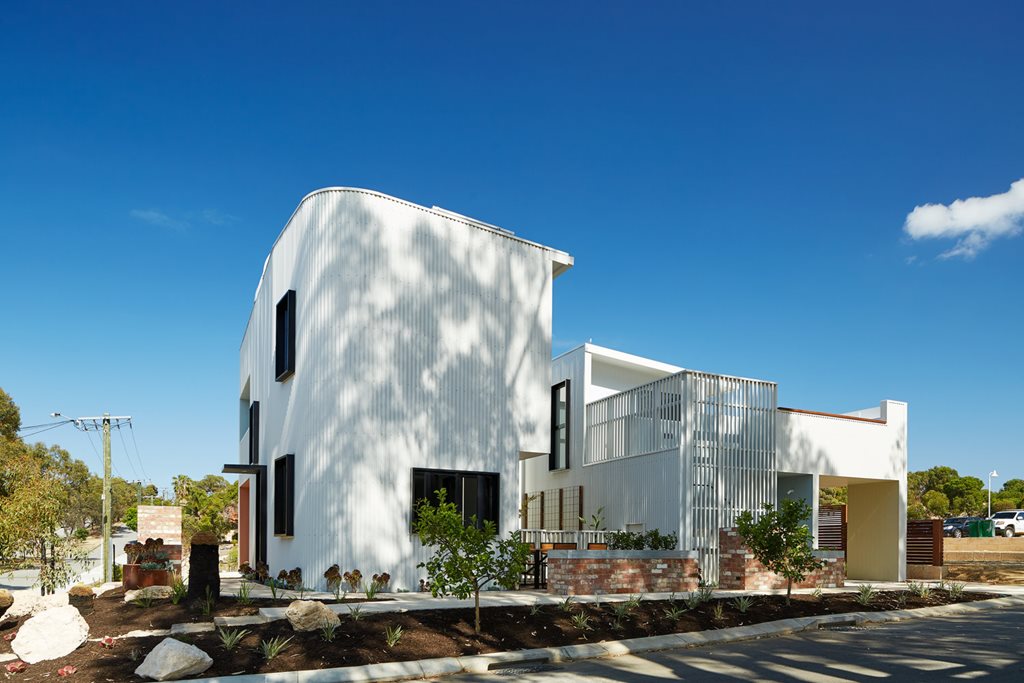
“A collection of small and affordable apartments, the project is based around a standardised core wet area and kitchen, with the three separate homes having a combined internal area that is less than the average Australian home,” the architects explain.
“Each unit is strata titled to contain private ownership of interior and exterior spaces and shared common property.”
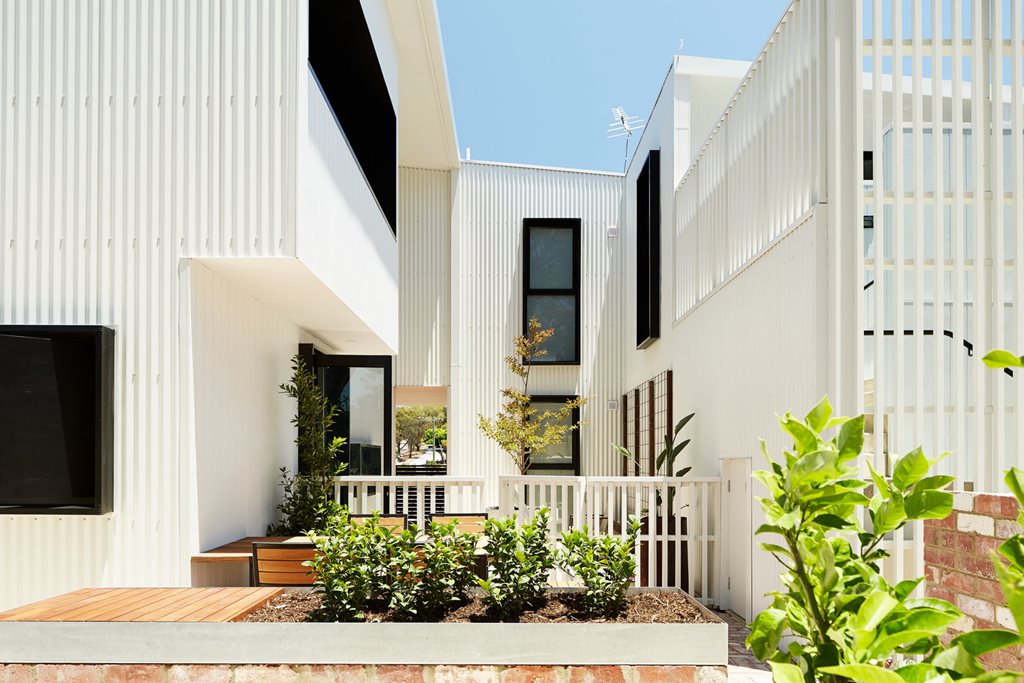
The project also speaks to a desire for community. Amalgamated productive gardens, gathering spaces and storage areas (for bikes, kayaks and scooters, for instance) create an external area that is shared between units and with the street.
“The project suggests a deliberate blurring between outside and inside – be it outside an apartment or outside the site – and provokes social and ecological interaction.”
Meanwhile, on-site car park slots are reduced, going against the perception that every apartment or house requires a car.
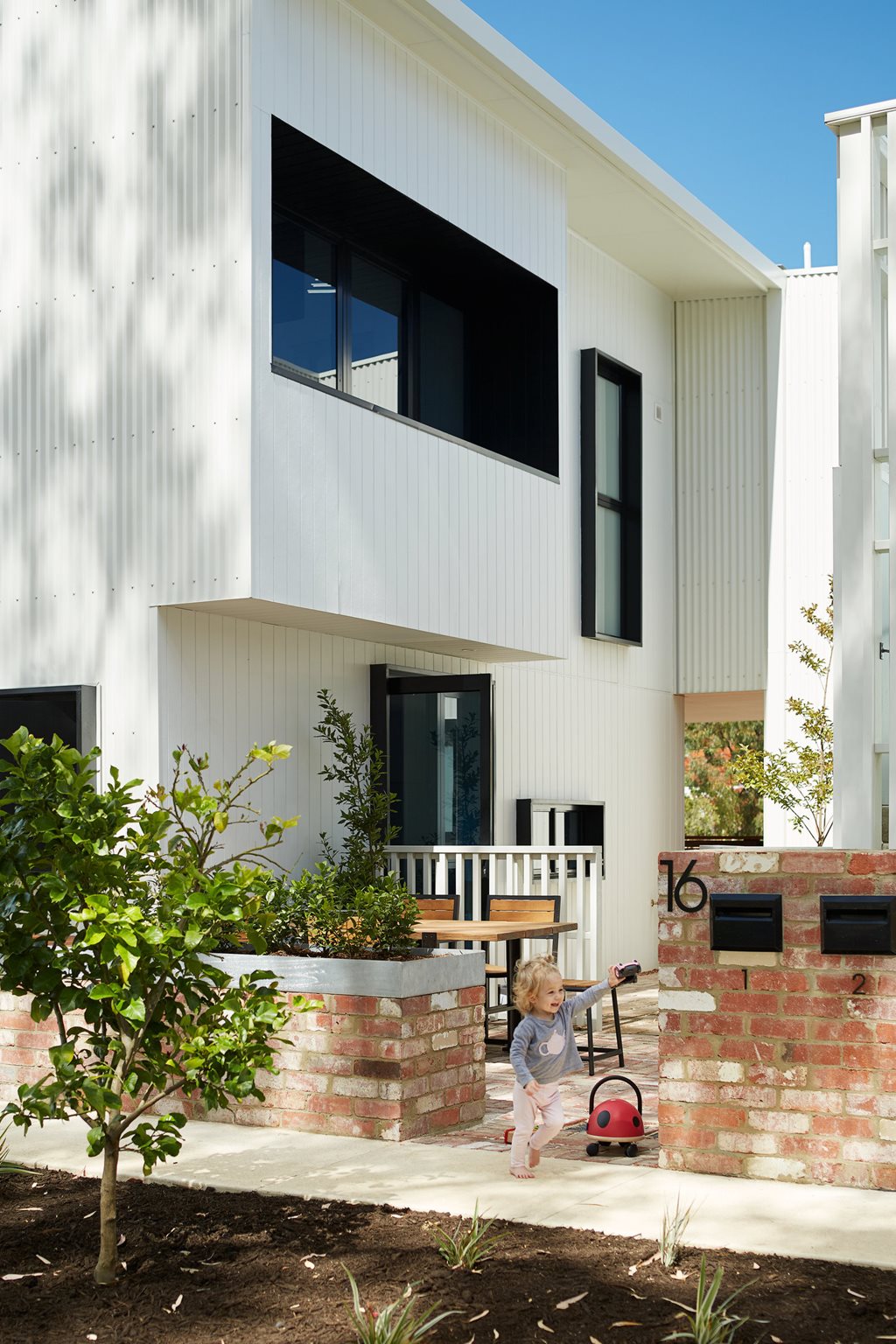
Completed in 2016, the Gen Y demonstration house meets the essential requirements of the ‘Liveable Homes’ accessibility standards. It is furthermore accredited with a ‘gold medal’-level life-cycle analysis by E-tool, and meets the principles of the ‘One Planet Living’ sustainability framework.
According to LandCorp, a key aspect of the project’s environmentally sustainable design is its climate responsive layout, which integrates solar passive design principles to ensure natural light and cross-ventilation to each apartment.

Sustainable ‘green concrete’ (using low-carbon furnace slag) was specified to provide thermal mass, while the robust and durable materials that line the façade minimise ongoing maintenance requirements.
The apartments themselves are constructed with lightweight timber framing to all walls, with a suspended floor and pre-finished refrigerant roof panels. The wall studs, which are larger than normal, permit excellent thermal insulation and an air gap.
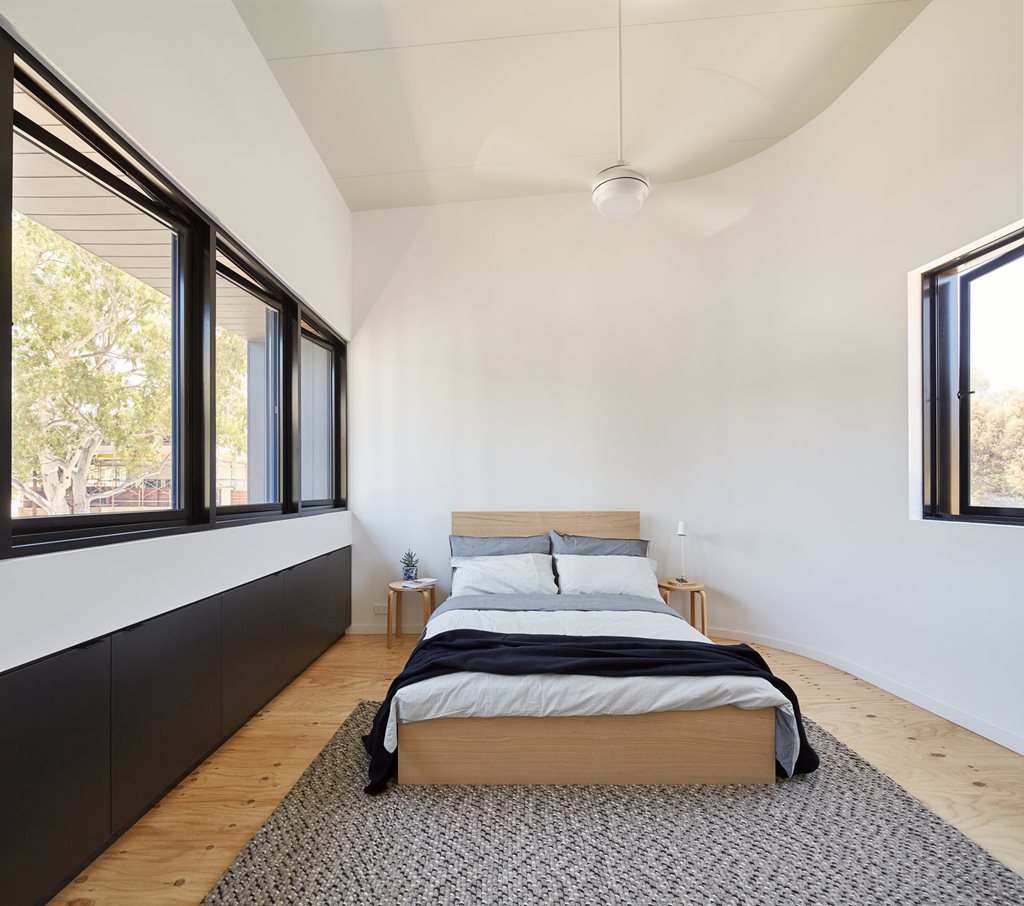
Other ESD initiatives include a 9kW PV system with battery storage; a 10,000L underground rainwater harvesting tank, and performance monitoring for all key services. The landscape design incorporates recycled materials and water-wise planting, with shared recycled brick planters for herbs and edible plants.
Accessibility was another priority for the project team. Wider doors and reduced thresholds, as well as allowances for the future installation of optional accessibility aids, ensures the project caters for occupants and guests with disabilities, and meets the changing needs of residents as they age.
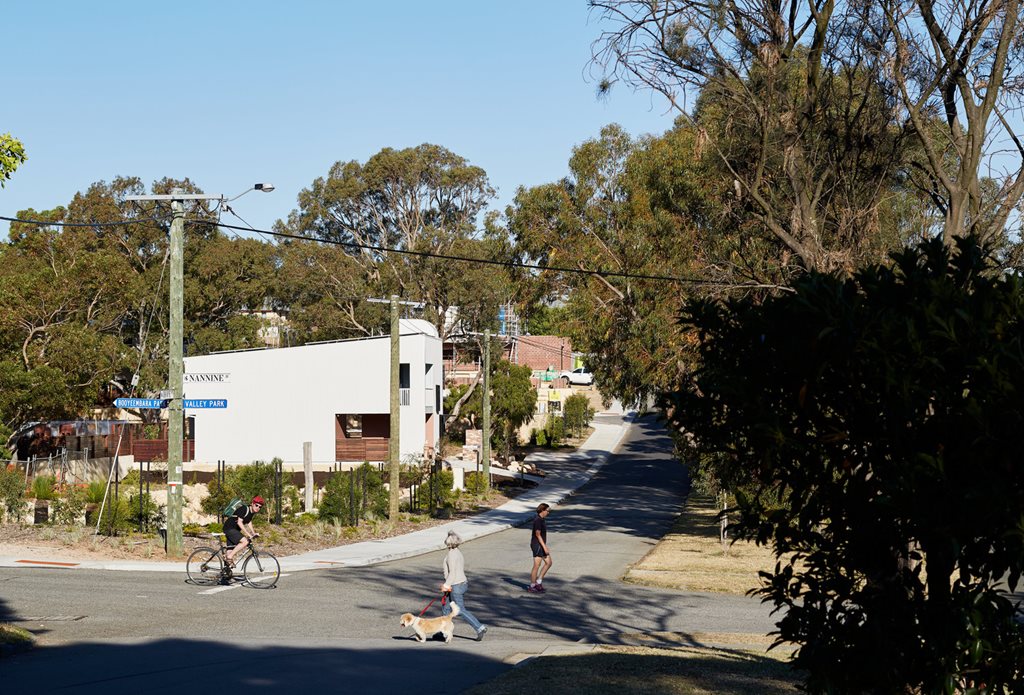
Providing stealth density in medium density areas while integrating well with its streetscape, Gen Y / Step House reconceptualises the possibilities that come when community, sustainability and affordability are equally prioritised in residential design.
Its flexible housing design model also ensures it can be easily replicated in the current WA property market.
The Gen Y Demonstration Housing Project is the subject of a four-year research project by the Cooperative Research Centre for Low Carbon Living and Curtin University. The research project monitors and assesses how energy-efficient design, technology performance and occupant behaviour impact energy use.
Images courtesy of LandCorp and David Barr Architects
Brought to you by:

